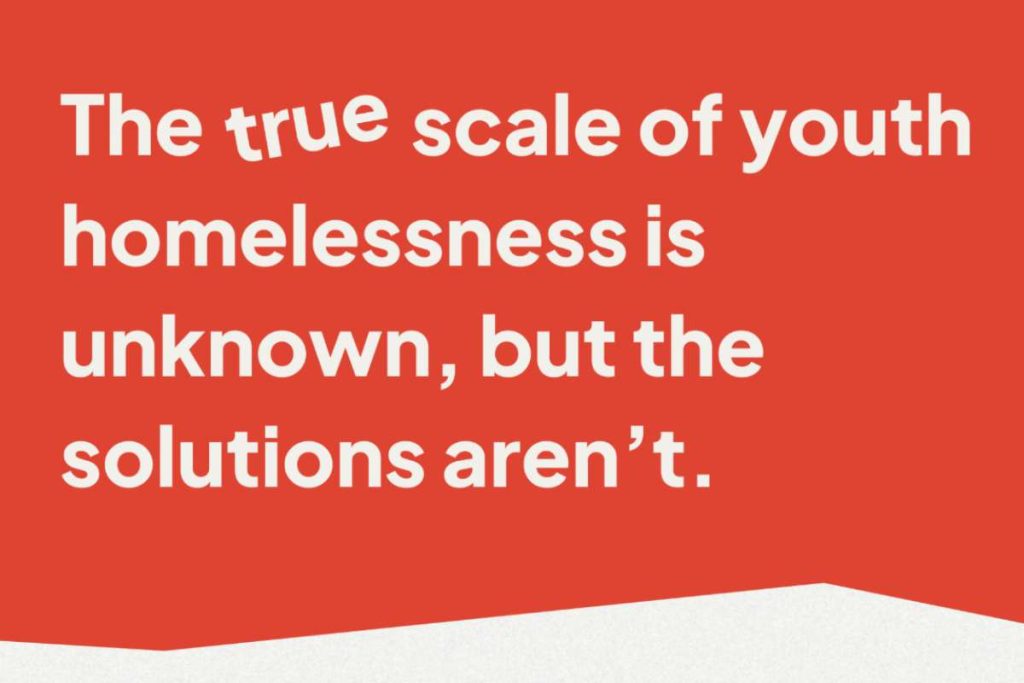129,000 under-25s approached their council as homeless last year, but the true scale is much larger. YWHP work with some of those young people, which is why we’ve joined the #Planforthe129k campaign, advocating for a governmental strategy to end youth homelessness
Calling for a strategy to end youth homelessness
The problem
In 2021-22, according to Centrepoint estimates, 129,000 16–25-year-olds presented at their local authority as homeless or at risk of homelessness. Many homeless young people remain hidden, not showing up in the data, so this figure could easily be double and with COVID and the cost-of-living crisis, it’s getting worse. New Horizon Youth Centre, a day centre supporting young people who are homeless or at risk in London, has seen a 12% increase in young people using our services over the past two years.
Covid changed everything, but certain truths remain; far too many young people in the UK find themselves unhoused, unsupported and unsafe.
Why?
Young people are not adequately supported during an already challenging transition to adulthood. They may be pushed into homelessness due to violence, abuse and trauma at home or in the care or criminal justice system. Required to be socially and financially independent for the first time, they face lower pay and minimum wage jobs in the labour markets, increasing their risk of poverty. With young people disproportionately affected by both the pandemic and the cost-of-living crisis, action is required now to avoid long term societal repercussion.
In delivering our work to support young people experiencing homelessness, we find they face the same unique barriers:
- They are often invisible to authorities and services: more likely to be ‘hidden homeless’, sleeping on a friend’s sofa or alternating between different short-term accommodations.
- They can’t evidence their homelessness, leading to cruel processes like having to approach their former caregiver for written confirmation that they are no longer welcome in their home.
- Young people are often not seen as priority need or taken seriously or believed when presenting at councils.
- They don’t know what support is available beyond the family home.
- They are subject to age-related discrimination in terms of pay.
- Young people receive reduced welfare benefit entitlements and are often punished by lowered benefits if they increase work hours despite lower income overall.
- There is a lack of supply of suitable, affordable and youth appropriate housing. They have no ready guarantor to secure rental housing if family relationships have broken down.
- They face systemic racism and discrimination of minoritised communities. Knowing that poverty plays a part in homelessness, it is important to stress that data consistently lays bare the difficult position that Black families are in – with a social Metrics Commission’s report finding 46% of Black households in the UK were in poverty, compared with just under one in five white families. Additionally, research shows that LGBTQ+ people are disproportionately impacted by homelessness with akt reporting that 24% of young people experiencing homelessness identify as LGBTQ+.
- They face higher risk of exploitation by not having their needs met.
Family breakdown can be a driver for homelessness, which in turn can increase vulnerability to exploitation (Bridging the gap: Transitional Safeguarding and the role of social work with adults)
Knock-on impact
Centrepoint reports only 37% of those young people who presented as homeless or at risk at their local authority in 2021/22 had a positive outcome, meaning their homelessness was successfully prevented or relieved, or they were housed under the main housing duty. The negative impact on the health, education and employment prospects of young people without a home cannot be denied.
Further, data from a questionnaire carried out by DLUHC in 2020 on people that sleep rough found that 54% of people reported experiencing homelessness for the first time when under the age of 25; and 48% experienced rough sleeping for the first time before this age.
We need effective, cross-cutting interventions for young people at risk of homelessness if we are to prevent entrenchment. Not to mention the opportunity cost of failing to harness the talents of a generation.
What can we do about it?
Young people’s experiences of homelessness are different from other age groups, so solutions need to be different, and they need to be informed by young people’s lived experience. Young people have been systemically overlooked in local and national homelessness and housing strategies, which reduces effective prevention opportunities and puts barriers in place for solutions.
Which is why it is imperative for government to adopt a cross-departmental strategy to end youth homelessness as a manifesto commitment, informed by young people’s lived experience.
This transition is the perfect place to show an active, intersectional intervention and a commitment to levelling up for every future generation.
We see three strands to a cross-departmental solution:
Step 1: Prevention – schools, families, and councils
- In schools
- An early identification programme within schools so those at risk are identified and supported.
- Better practical education for independent living e.g., budgeting, taxation, bills. Educate young people about what they are legally entitled to, the systems they will interact with when turning 18, what their rights are and where to go for support. This should include knowing that they can approach their local authority if homeless to be assessed for priority need.
- Better emotional education giving young people tools to navigate inter-generational challenges.
- At home and in communities
- Better support for parents and families in community and educational settings so issues can be flagged earlier, and problems worked through. Including family mediation services (where appropriate) and financial support. Training for teachers, faith leaders and other community stakeholders to recognise the warning signs that lead to youth homelessness and what to do if it happens (linked to the early identification programme above).
- At Councils
- A youth-specific chapter in the Homelessness Code of Guidance
- Ringfenced budget for youth specific services; better funding for councils to deliver homelessness prevention duty; ensuring services are fit for the diverse needs of young people
- Trusted partners e.g., in third sector organisations able to provide evidence to local authorities of a young person’s homeless status.
Step 2: Housing
- Purpose built emergency housing for young people
- More affordable and youth-appropriate housing stock
- Improved regulation
- Solutions in place to support discharge of Duty to refer for young people leaving hospital, care, the criminal justice system, and NASS accommodation.
- End single accommodation age cap – young people under 35 need the option to live alone where necessary e.g., if a young person has learning or mental health needs that make sharing untenable.
- Better resourcing and support for local authorities to help them tackle rogue providers of exempt supported accommodation.
Step 3: Finances
- End age-related pay and benefits discrimination (including LHA which matches the market)
- Match financial obligations and entitlements – e.g., we currently see Council tax exemptions for students but not young workers.
- Better financial support options e.g., alternatives for providing a guarantor when renting.
Conclusion
Homelessness isn’t a mystery or senseless, it’s a direct outcome of the systems that are meant to protect us all failing. When people don’t have the ability or support to advocate for themselves and push for help, they fall through the cracks.
The severity of the situation requires a bolder and youth-specific response.
Adopting a youth homelessness strategy, based in the evidence from the sector, would directly transform the lives and futures of young people in the UK, something any government would be proud of.
Isn’t it time we give potential a home?



